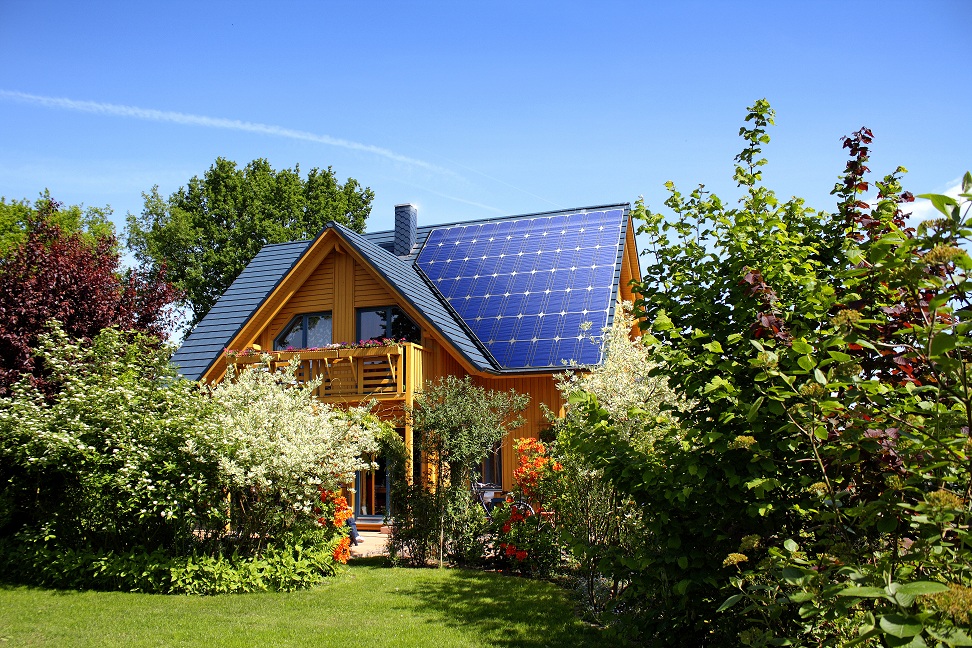Sustainable Roofing Options for Your Home
Climate change, deforestation, air pollution. You hear about these things when you turn on the news, pick up the morning paper, and in conversation with friends. The environment and the impact you have on it is an important issue, and you do your best to use sustainable living practices to lighten your carbon footprint.
However, when it comes to your roof, you may not know which options will help with that goal. In this blog, we will discuss a few ways to make your roof as eco-friendly as possible.
Choose the Right Materials
The most important decision you need to make before you can construct your “green” roof is its material. This element will influence any roof’s sustainability, so take time and care before settling on one.
Metal Panels
The first thing to consider is how long each material will last. For example, metal roofs use more energy than most materials during the manufacturing process, but they last for decades. Their longevity offsets the initial energy use. Once you have these metal shingles, they reflect heat so your air conditioning does not have to work as hard, saving both energy and money.
If you live in the city, you may have heard about the “heat island effect.” In cities of one million people (or more), temperatures tend to be higher than surrounding rural areas because developments such as roads and buildings reflect and intensify heat. You can feel this increase on the surface and even into the atmosphere.
Unfinished metal roofs contribute to this heat intensity because of their reflective qualities. Avoid contributing to the heat island effect by requesting factory-painted panels in lighter colours.
Reclaimed Wood for Shingles and Shakes
Wood shingles and shakes have that classic, rustic look that many homeowners adore. Unlike metal roofing materials, conventional wood takes little energy to produce. However, it is still not a sustainable harvest because old-growth cedar tree populations do not always have time to recover before manufactures harvest them again.
If you love their look but prioritize sustainability, choose reclaimed lumber. Roofers can recycle wood from previous roofs, bridges, and buildings. Use this for the entire roof or just parts of it.
Clay and Concrete Tile Shingles
As one of the top environmental choices for homeowners, tile roofs last for decades. However, the clay or concrete may weight too much for some houses, so ask a professional roofer to evaluate your home before you choose this material. When he or she visits your home, ask about lighter-weight options that contain recycled content.
Living Plants
The “greenest” roofing option may literally be green. Living roofs are gardens that cover parts or entire roofs. They support mosses, shrubs, herbs, bushes, and grass that sit in soil on top of a waterproof membrane to protect your home’s interior.
This roofing option lowers cooling costs, reduces carbon usage, and lessens rainwater runoff. However, it comes with an initially high price tag, and you have to maintain it more often than other roofing materials. You must treat this like your lawn since its plants have a similar growth rate. Only choose this option is you have a flat or slightly angled roof and can maintain the plants.
Install a Cool Roof
In the “Metal Panels” section, we mentioned that you should ask request shingles in lighter colours, but we didn’t explain why. Well, think about it in the context of clothing. If it’s hot and sunny outside while you wear a black shirt, you will likely feel the heat more intensely than your friend who wears a white shirt. This is because lighter colours reflect heat while dark colours absorb it.
When you place dark materials on your roof, the colour absorbs heat and transfers it into your home. On the other hand, a cool roof creates a barrier that deters direct sunrays and ambient heat.
You can use nearly any roofing material you prefer and still create a cool roof by:
- Coating roof with reflective paint
- Installing a sheet covering
- Replacing the current roof with reflective tiles or shingles
Insulate Your Attic
You must insulate your cool roof to reap its benefits. Proper insulation protects your home from extreme outdoor temperatures and helps air conditioning or heating systems work at maximum efficiency.
Insulation materials should vary depending on the type of house and the climate. Consult with a roofing contractor to see which you should select, including:
- Open or closed cell
- Cellulose
- Wood fibre
- Gypsum board
- Perlite
- Cellular glass
Prioritize your attic insulation, particularly where it meets your roof, to create the most energy-efficient home possible.
Seek Professional Installers
Proper installation is a critical step in any eco-friendly roof. Therefore, choose a professional roofing company team that has experience in sustainable roof construction. Don’t forget to ask questions about which material you should choose, how to make your roof cooler, and what insulation would work best for your home and climate.




0 Comments
Recommended Comments
There are no comments to display.